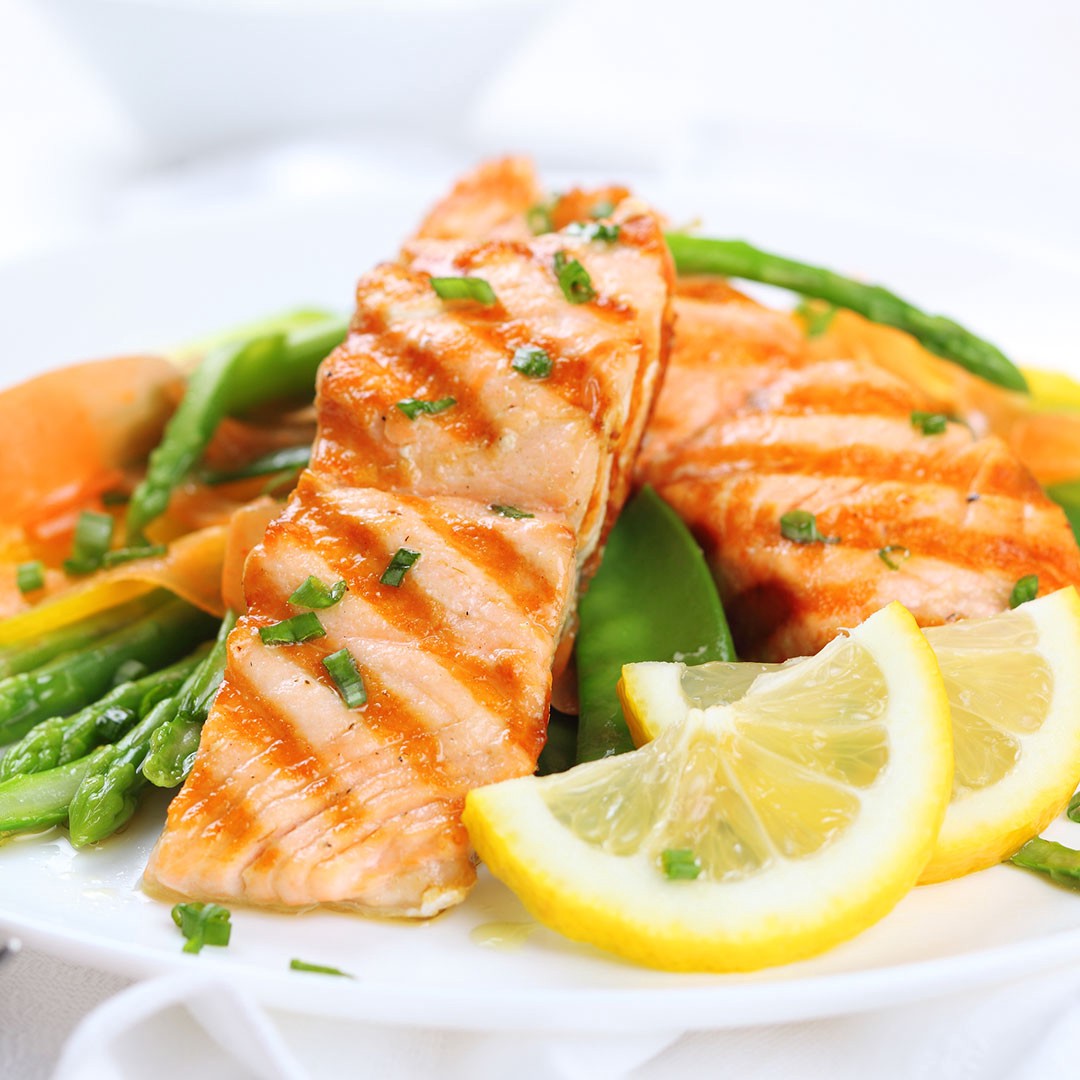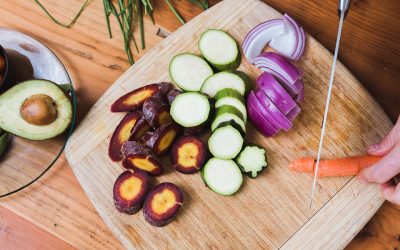Living with type 1 diabetes (T1D) can feel like you’re living on a rollercoaster, constantly chasing high and low blood sugars, day-after-day. Sometimes it seems easier to just ignore it, but that won’t work because when blood sugars are not balanced, you’ll end up feeling lethargic, irritable and fears of complications will start to linger in the back of your mind.
There is a simple solution. Truly. It took me almost thirty years to finally learn how to eat healthy and feel great with type 1 diabetes, and doesn’t include following the typical recommendations given by most doctors.
Diagnosed with Type 1 Diabetes in Childhood
I was diagnosed with type 1 at the age of seven. In 1980, I was put on the ‘exchange diet’ where I had to eat the exact same amounts of carbs and protein at every meal, at the exact same time, everyday. I’d weigh my bread, count my pretzels, measure my milk — measuring spoons were used in my house as serving utensils.
For many years, I was a very obedient little girl, taking sugar-free Jello to birthday parties, recording all meals in my log-book and noting any bite of sugar I put into my mouth, which was allowed twice per week.
In my teens, however, I started to rebel. As anyone with type 1 diabetes knows, following the ‘perfect’ diabetes diet is practically impossible. I ended up in a cycle of binging and over-exercising that lead me into a two-month, inpatient, eating disorder rehab center in Arizona. I came out battered and bruised, but was ready to start a new way of eating.
Everyone wants stable blood sugars & to feel great
What I realized was that I simply felt better when my blood sugar levels stayed stable. Keeping blood sugar levels balanced — through clean, lower-carb eating — will give you more energy, less irritability, less anxiety, clearer thinking and you’ll feel happier too.
By eating a diet based mainly on vegetables, protein, healthy fats, low-glycemic fruit, and less carbs — it is much easier to achieve good blood sugar levels. Following this way of eating can be life changing for those of us who were told we could eat as many carbs as we wanted and just take more insulin. This ineffective yet widely-used approach makes achieving stable blood sugars impossible.
What do I eat now?
I have the freedom to enjoy so many delicious foods now without ever having to strictly weigh or measure them. I also love allowing myself to eat as many low-carb vegetables as I want. This helps me feel less restricted and curbs my old need to rebel.
Breakfast: I typically start the day with one of my amazing low-carb flaxseed muffins, plus a homemade, no-carb, coconut milk, matcha green tea latte. My many favorite ways to make chia seed pudding also makes for a satisfying morning meal.
Lunch: A common lunch for me consists of a big salad with any veggies I have in the refrigerator, — plus to make it feel like a meal — I always add seeds or nuts, cheese, and avocado, maybe some legumes, and then dress it with olive oil and salt. I also love making lettuce wraps with all the fixings normally found in a sandwich.
Dinner: My guilt-free dinners tend to be quick and delicious vegetable-based dishes. A simple serving of baked, steamed or broiled vegetables covered in olive oil, rosemary and sea salt is always a go-to favorite. This usually includes at least two or three of the following: broccoli, cauliflower, eggplant, green beans, spinach, kale and/or asparagus. If time permits, I’ll also include a piece of healthy protein, like wild salmon, free-range chicken or grass-fed beef. This Portobello Salmon Melt recipe is one of my favorites.
Fyi, you’ll likely still need a small dose of insulin for a big bowl of vegetables — depending on which veggies you eat — due to the small amount of carbs many veggies contain. Insulin is needed for protein at times too, especially when it is eaten in the absence of carbs.
80/20 Rule
What I suggest for most people living with or without diabetes, is to eat a diet primarily of vegetables, nuts/seeds, low-glycemic fruit, healthy proteins and fats — at least 80% of the time.
The other 10–20% of the time, enjoy foods you love that are not part of your daily diet — indulge and enjoy! (This rule can vary depending on your treatment goals.)
There is no need to call your indulgence foods ‘bad’ or ‘cheat’ foods. I don’t suggest trying to follow a perfect diet nor having guilt when you indulge. Food is delicious and meant to be enjoyed! Moderation will save you and is the key to feeling great with diabetes.
When You Indulge
When you do happen to indulge, for example, when you are about to enjoy your favorite bread, pasta, dessert, or other high carb food, here’s what to do to help keep your blood sugar level as steady as possible:
1. Check your blood sugar to make sure you are not low.
(Skip step #2 if you’re low.)
2. Dose at least 30 minutes in advance.
Although insulin starts working within 15 minutes — it doesn’t reach its full power for at least 60 minutes after injecting. Dosing insulin early helps to keep you from going high once you start eating. (This advanced training sheds light on if and when you could dose even earlier.)
3. Fully enjoy your high-carb meal or treat!
If you have dosed correctly to cover the type of high-carb item you have eaten, you shouldn’t go too high. Now this is another topic entirely on its own that is very complex…knowing how to dose properly for a high-carb meal.
4. Once you finish, move your body for at least 10 minutes.
This will make your insulin work faster and aids in digestion. I get creative in order to move my body wherever needed — walking laps around parking lots, running up and down stairs, doing squats in a bathroom stall on an airplane or briskly walking up and down my driveway.
5. High-carb meals and treats are very complex to dose for.
You never know when the glucose will fully hit your bloodstream or when digestion is fully complete, nor when the insulin will peak versus wear out. I suggest testing frequently for up to 4–8 hours after a high-carb indulgence to make any needed adjustments to your blood sugar.
Know the Timelines
Beware that food usually digests on a very different timeline than the action curve of insulin. If your food digests before the insulin works, your blood sugar level will go high until the insulin finally kicks in. Alternatively, if the meal is large and/or complex, containing carbs + fat + protein, the digestion could take hours so the insulin could peak first (making you go low) but then wear off. If the food is still digesting after the insulin wears off, then you’ll go high hours later.
I suggest making rich, complex meals a rare exception to your normal daily diet. Also, having your indulgent meals or treats at lunch is a good idea since you’ll have time to watch your blood sugar and make any needed adjustments throughout the afternoon, thus avoiding the frustrating guesswork of what your sugar levels will do while asleep.
Understanding Correction Doses is Complex
What happens if your glucose level is 200 mg/dL (11 mmol/L) two hours after the meal? Do you take a correction dose or wait until your mealtime dose is fully out of your system?
This topic is too complex to cover here. Every food, activity and person requires a unique and individualized answer to this question. If you’d like to learn more, check out my online course, How to Avoid the Blood Sugar Roller Coaster and Mealtime Dosing — Why Carb Counting is Not Enough.
Learning how to achieve healthy blood sugars is the most valuable tool for anyone with diabetes. When you stop the ‘count and cover’ way of eating, your blood sugar levels will dramatically improve, many often lose weight, and you’ll likely feel better mentally and physically than ever before! This has been true for countless of my patients all around the world who I’ve helped adopt a low-carb, whole-food diet.
Want support on how to get an A1c below 6.5%? Dr. Jody offers private calls, online courses, and a monthly education program called The T1D CREW. Learn more here: www.DrJodyND.com.





